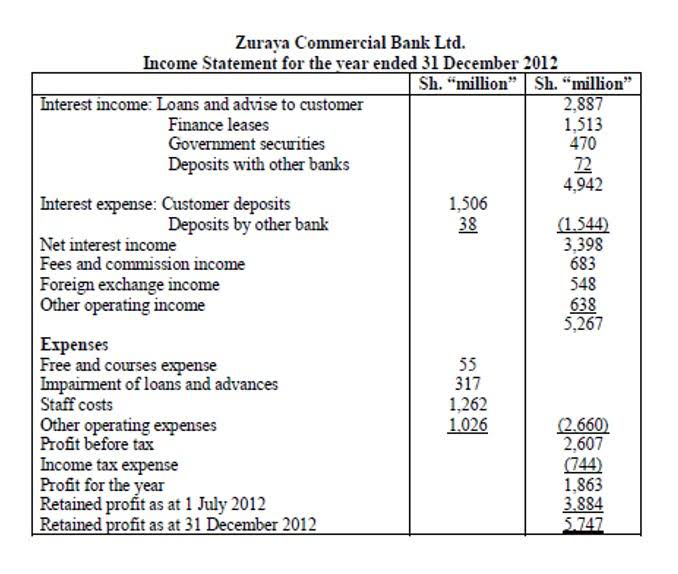
Cost is defined as all costs that were necessary to get the asset in place and ready for use. definition of accumulated depreciation These assets are often described as depreciable assets, fixed assets, plant assets, productive assets, tangible assets, capital assets, and constructed assets. After five years, the accumulated depreciation totals $10,000, reducing the book value of the furniture to $10,000. This accounting treatment ensures the expense is recognized over the furniture’s useful life, aligning with the revenues it helps generate.

Understanding Depreciation in Accounting
It is calculated by simply dividing the cost of an asset, less its salvage value, by the useful life of the asset. Most businesses set minimum amounts to determine whether they’ll depreciate an asset or expense it right away. A small business might set this threshold at $500, while larger corporations often use higher limits like $5,000 or $10,000. It’s simply not worth the time and accounting costs to depreciate everything a company buys for these purposes. When a business buys equipment, reporting the full value as an expense right away could make even profitable companies appear as if they’re losing money. Thus, companies often use depreciation—an accounting method that spreads these big-ticket expenses over time.

Investment and Business Planning
You can learn more about impairment losses by reading the appropriate parts of an Intermediate Accounting textbook or visiting the Financial Accounting Standards Board’s website. Note that the depreciation amounts recorded in the years 2022 and before were not changed. For example, a printing press producing 1 million pages over its lifetime would allocate depreciation based on the number of pages printed annually. A company buys a machine for $50,000, with an expected useful life of 10 years and a salvage value of $5,000.
Inventory Management
Therefore, the “double” or “200%” will mean a depreciation rate of 20% per retained earnings balance sheet year. For financial statements to be relevant for their users, the financial statements must be distributed soon after the accounting period ends. Accumulated depreciation is a contra-asset account, meaning it reduces the value of assets on the balance sheet rather than being a liability. Accumulated Depreciation data is often presented in aggregate form, making it challenging to discern the depreciation of individual assets. This lack of asset-specific detail can be a significant drawback for businesses managing diverse asset portfolios, as it hinders precise tracking and management of individual assets. Accumulated depreciation ensures that a company’s assets are not overstated on the balance sheet, providing a more realistic financial position.

Is Accumulated Depreciation an Asset or a Liability?
- This presentation ensures that financial statements accurately portray the asset’s remaining value after accounting for its depreciation.
- Accumulated depreciation aggregates the total depreciation recognized to date.
- For example, an asset with a useful life of 10 years will have a depreciation rate of 20%, so under the double-declining method, the depreciation rate becomes 40%.
- Our GST Software helps CAs, tax experts & business to manage returns & invoices in an easy manner.
- Accumulated depreciation is reported on the balance sheet as a negative number in the asset section, reducing the overall value of the fixed assets owned by the company.
- Depreciation refers to the expense recognized each year to account for an asset’s reduction in value over time.
Since the accumulated account is a balance sheet account, it is not closed at the end of the year and the $2,000 balance is rolled to the next year. At the end of year two, Leo would record another $2,000 of expense bringing the accumulated total to $4,000. This annual entry would be recorded every year until the truck is fully depreciated. Using asset management software like Asset Infinity, businesses can track depreciation in real time, ensuring that each asset’s value is correctly adjusted and reflected on financial reports. This eliminates the risk of overstatement and keeps financial statements compliant with accounting standards. When an organization purchases a fixed asset, such as machinery, a vehicle, or IT equipment, the initial cost is capitalized on the balance sheet.

What Is Depreciation Expense?
- For the past 52 years, Harold Averkamp (CPA, MBA) hasworked as an accounting supervisor, manager, consultant, university instructor, and innovator in teaching accounting online.
- Over time, the asset’s value decreases due to wear and tear, obsolescence, or usage.
- In our example, the depreciation expense will continue until the amount in Accumulated Depreciation reaches a credit balance of $92,000 (cost of $100,000 minus $8,000 of salvage value).
- CAs, experts and businesses can get GST ready with Clear GST software & certification course.
Without it, you might overstate profits or miscalculate the value of the asset, leading to inaccurate financial reports. For further exploration of accumulated depreciation and its application in financial reporting, refer to accounting textbooks, industry standards, and authoritative financial websites. That part of the accounting system which contains the balance sheet and income statement accounts used for recording transactions. Some valuable items that cannot be measured and expressed in dollars include the company’s outstanding reputation, its customer base, the value of successful consumer brands, and its management team. As a result these items are not reported among the assets appearing on the balance sheet.

Understanding Accumulated Depreciation: Definition, Calculation, and Examples
You report accumulated depreciation on your balance sheet as a contra-asset account. The IRS allows you to deduct depreciation using straight-line or accelerated depreciation methods. For example, Accumulated Depreciation is https://www.bookstime.com/articles/full-time-equivalent a contra asset account, because its credit balance is contra to the debit balance for an asset account.
